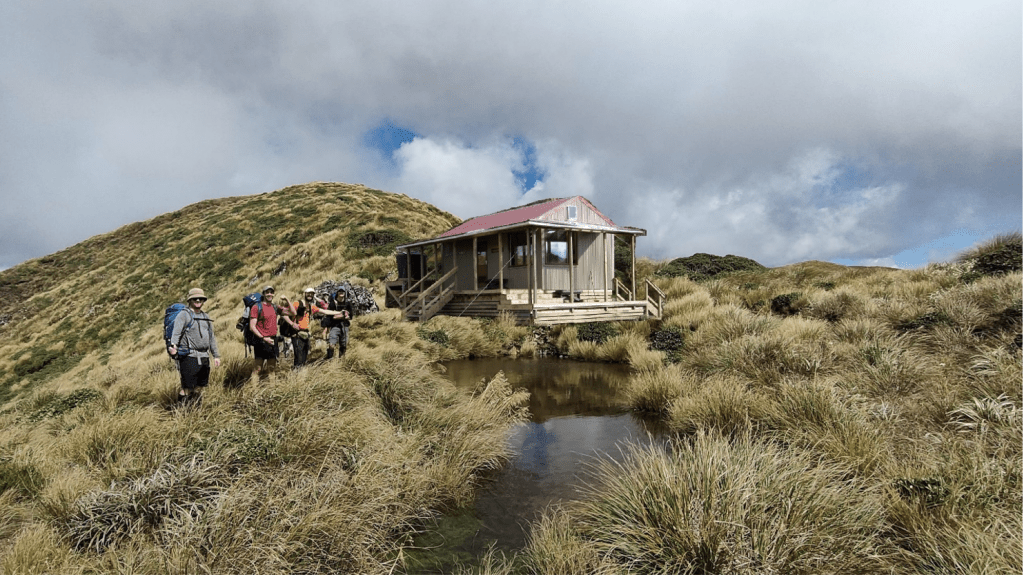
While it was not the trip we had planned originally, our 50km+ Ōtaki Forks circuit tramp had a little bit of everything: views, blue skies, slugs and slips.
Our intention had been to stay at Maungahuka Hut on Saturday evening. Maungahuka is known as a difficult hut to reach. It involves climbing a steel ladder, and navigating steep tracks with sheer drops. It isn’t one for the faint hearted.
Anne and I had been keeping an eye on the weather all week, and on Friday morning Anne sent me a text. The forecast showed the winds were set to pick up on Sunday morning, with gusts of up to 60+ km/ph. Not conditions you want to deal with when skirting around cliffs or climbing steep ladders in exposed mountainous terrain.
After some deliberating and updating the rest of the group, we settled on a different route, which would take us past Maungahuka Hut to Elder Hut, and down Waiotauru Track back to our road end. This meant we would be back below the safety of the tree line on Sunday when the forecast strong winds were due.
We all gathered at the usual meeting place at the Wellington Central Train Station, and were soon on the road. After some discussion, we settled on Burger Wisconsin in Paraparaumu for a quick dinner. We reached the road end shortly after 6:30pm. The slip last year meant we had a 45 minute walk ahead of us before we reached the start of the track towards Field Hut.
The slow steady climb to Field Hut begins at around 100m above sea level, with the hut sitting at 850m. We enjoyed a beautiful evening as the sun set on our ascent. I even managed to pick a few blackberries along the way. The track was surprisingly overgrown in sections, with vegetation obscuring the track. We agreed that there were likely fewer people on the track due to the slip.
The head torches came out not long after. It was slow going up to the Hut. I found myself struggling to see where to put my feet at times. But as it turned out, all that was needed were fresh batteries and suddenly my world was luminated once again. It was an important reminder to always bring a spare set on a trip, especially if you expect to be tramping after dark.
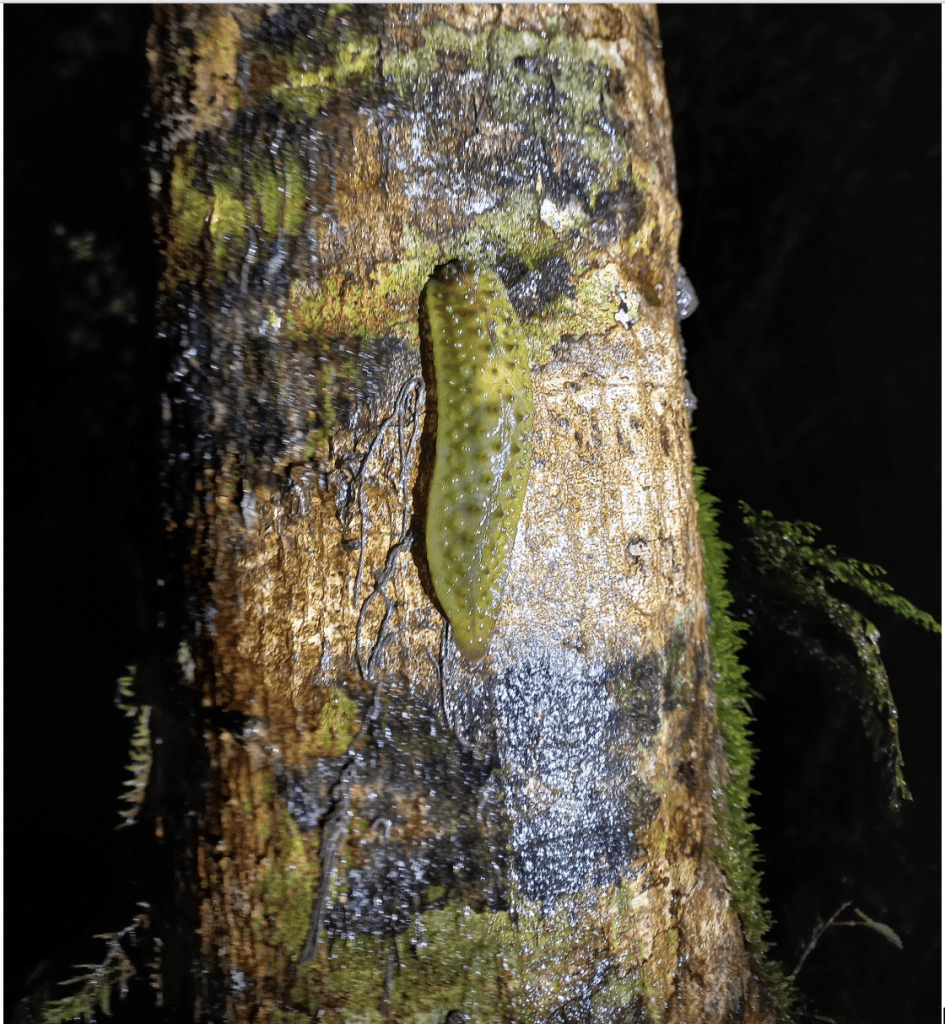
A striking find in the dark was made by Jamie and Erik. Their head torches shone on a neon green-yellow, finger length blob on a tree truck. They had come across a Pseudaneitea papillata – a species of slug. They are nocturnal, and apparently like to feed on fungi and algae. It was well spotted in the dark of the bush.
The fastest in our group made it to Field Hut before 10pm, with the rear guard arriving just before 10:30pm. It was my first time staying at the Hut, and I enjoyed the old charm of the place. It was a bit of a novelty to sleep upstairs in a DOC hut.
Saturday morning roused us, and we were out and ready to start the day by 8am. We couldn’t have asked for a better day. Blue skies and hardly a breath of wind. We had yet to determine where our resting place for the day would be, either Elder or Renata Hut. We agreed that we’d see how we went throughout the day and make a call once we reached Elder Hut. But there was plenty of ground to cover before we’d reach the Hut.
It wasn’t long before we had climbed above the tree line and were walking through the tussocked tops of the Tararuas, with majestic 360 degree views all around us. The climb up to Kime Hut was steep at times, although intermixed with relatively flat sections. Before reaching Kime Hut for morning tea, we would pass the junction where the trail split towards Maungahuka Hut. We paused here for a while, and there were a few comments about whether it may not be too late to go back to our original plan. But Anne had checked the forecast again, and the winds were only looking worse. We remained on course and continued to Kime Hut for morning tea. While we sat on the veranda eating our sandwiches and snack bars, a helicopter buzzed overhead and landed on Hut Mound. We’re not quite sure what they were doing there, but our best guess was some kind of photoshoot.
From there we continued up to Mt Hector, and stopped for another break at the war memorial on the summit. It was a perfect spot to take in the views, although some cloud had started to appear by this stage. We followed the ridge on towards Mt Aston, and experienced a bit of CLAG here and there. Our next checkpoint was the junction with Renata Ridge and the track towards Alpha Hut. We took the western route down on to Renata Ridge, towards Elder Hut.
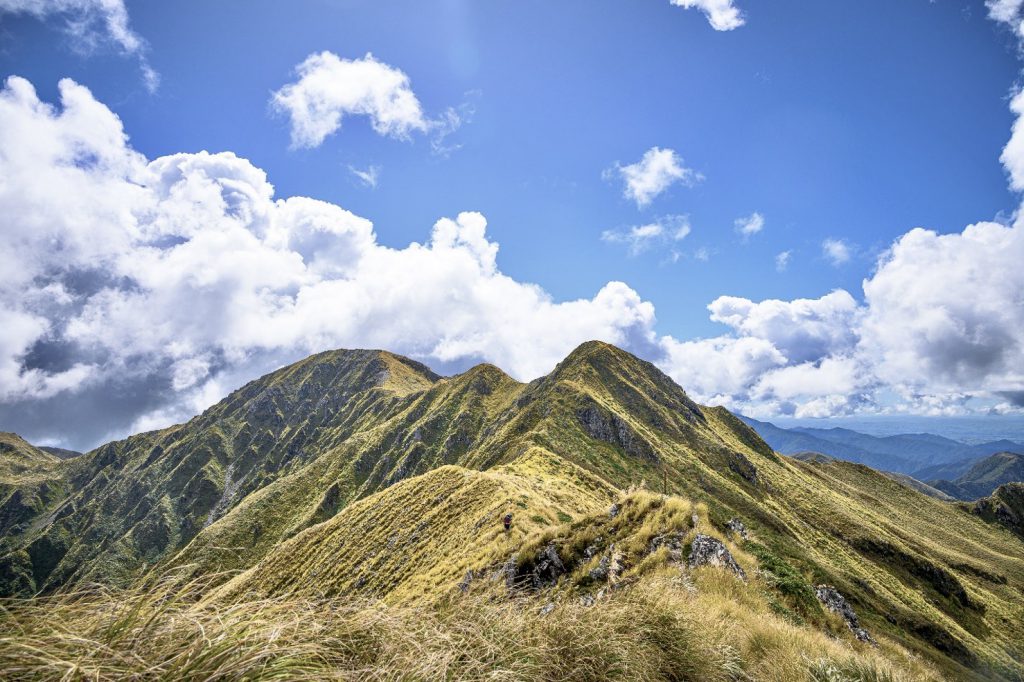
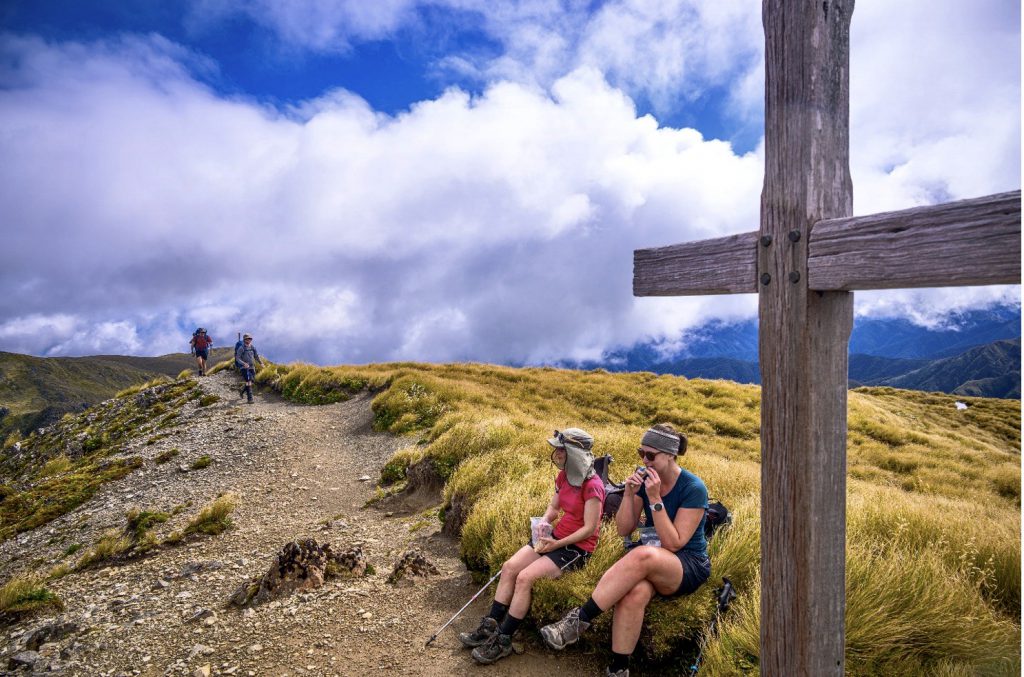
The terrain became very steep very quickly. I found myself struggling with awkward footing, but still managed to enjoy the goblin-esque forest along the tops. We also saw great views to the South West back towards the Hutt Valley and Wellington, and I could now orientate myself when I looked back to the Tararuas from the city.
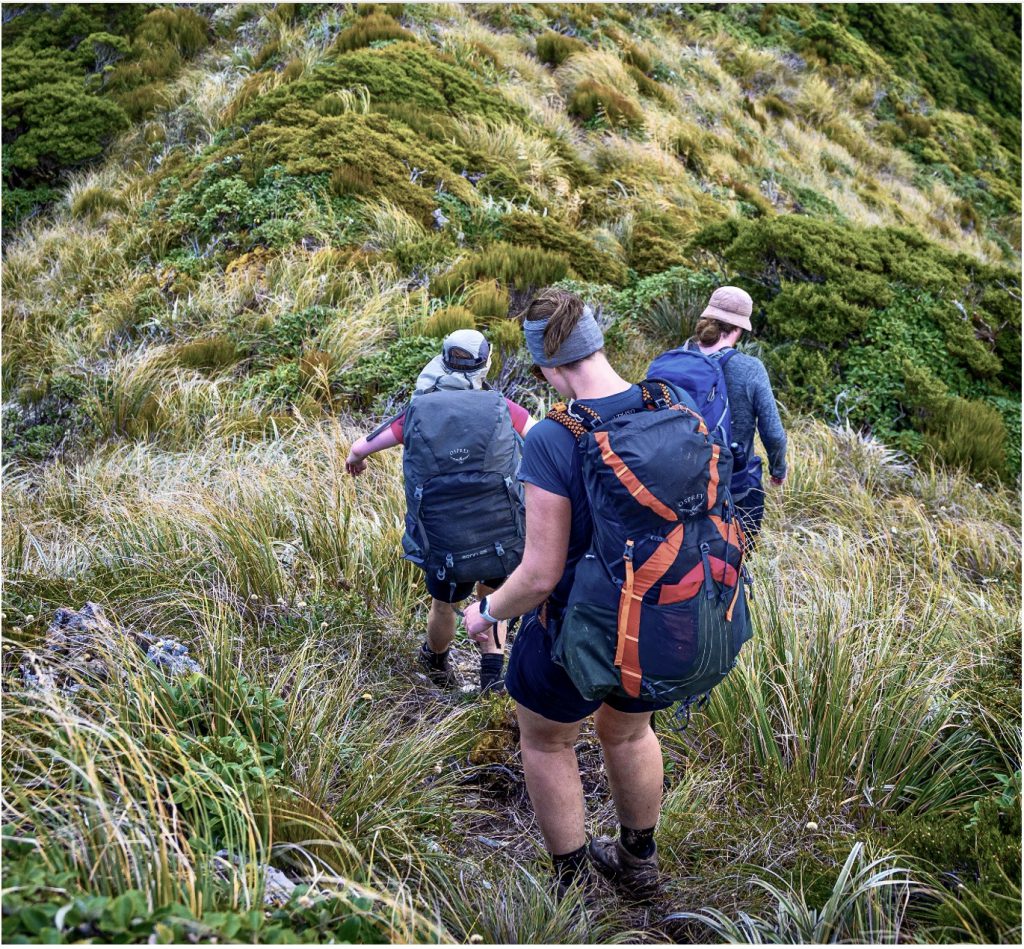
We continued climbing down to Elder Hut, and towards the end I could feel my legs starting to take on a jelly-like consistency. As the last person walking into Elder Hut, I was certain I couldn’t go on any longer. Renata Hut would have to wait until Sunday. However after a rest, and some replenishment, I felt ready to go again. James and I set off at a slower pace, while the other four went on ahead of us.
By this stage we had done most of the descent, but we encountered some really boggy sections on the way up to Renata Peak. Again, the track in places was quite overgrown, and we still hadn’t seen anyone else, bar a few people who had stayed at Field Hut on Friday night.
James and I trundled on past Renata Peak as the sun began to set again. As we moved into beech forest, we startled a few Billy goats in the bush. As the bush became darker, we hoped we might just make it to Renata Hut before nightfall, however we had to bring out the head torches again about 10 minutes before reaching the Hut. By the time we reached the clearing where Renata Hut sits, we had done a 12 hour day and I could feel it.
However, as it turns out, we couldn’t have timed our arrival any better, as the others had just finished making vegetable tostadas for dinner, with ample servings of feta and spring onion. The hut had been rebuilt in 2020, and a photo album in the hut documented the work that had been undertaken. Having seen what the hut used to look like, we all felt grateful for the renovations that had been undertaken.
The push on to Renata Hut on Saturday meant a shorter day on Sunday, but we were still anticipating a 7 hour plus day. Leaving Renata Hut just after 8am, we climbed up to Maymorn Junction. We met a few campers who had driven in from Waiotauru Road. We followed the 4WD track towards Waiotauru Hut. It was an easy start to the day, however there were a few slips to cross, which was a sign of things to come.
We reached the hut late morning. It was fair to say we were happy we hadn’t stayed there. Empty RTD boxes and unwashed frying pans were clustered around the cooking bench. I flipped through the trip intentions book and had to do a double take. A well known member of the club, Monique, had stayed in the hut the previous night with her sister. We figured they were only a few hours ahead of us.
Past the hut, the track took on a more familiar tramping track appearance as we followed the river as it wound its way down the valley. A few river crossings meant we would all be walking out with wet boots.
It became increasingly apparent that it wouldn’t be an easy stroll out to Ōtaki Forks. Long grass and branches became familiar obstacles, and the quality of the track degraded. We clambered over and around at least three slips, which required serious scrambling. In parts we needed to climb 10 – 20 metres up the sides of the valley, as the track had been swept away. We swung like monkeys from branch to branch, using whatever handholds we could find to aide our journey.
Even when we reached the clearing at the historic mill site, not that far from the campsite, there was still one more slip to navigate. A bungy cord had been tied in place to help our climb up the steep bank. It must be emphasized that this section was very tough in places, and as fewer people are likely to walk the track due to the slip on the Gorge Road, it is only going to become more overgrown and difficult to travel through. The track is in urgent need of some TLC – namely in the form of a chainsaw and some restructuring of the track!
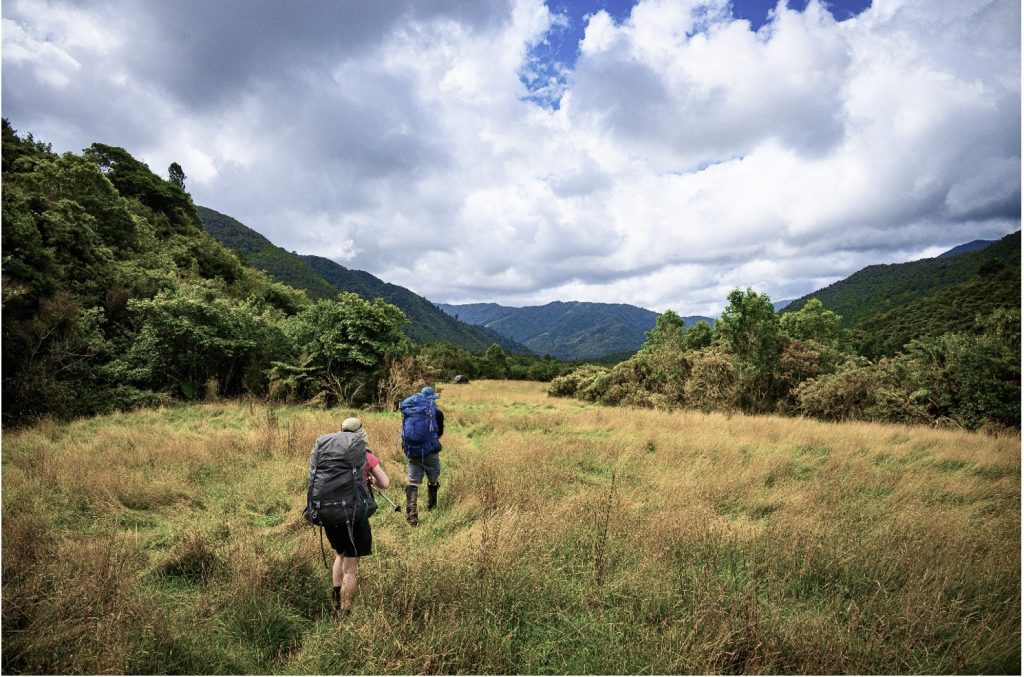
Reaching the campsite at Ōtaki Forks felt like a relief, at least for me. I swapped out my sodden boots for sandals, and we followed the road back out to the carpark. There was a man waiting for a taxi pick up, who as it turns out, had stayed the night at Maungahuka Hut. Apparently the walk out had been “heart in mouth” at times – which was a good reminder for why we had stuck to our revised trip plan.
Trip details:
Started from Ōtaki Gorge Road end Friday night, and spent Friday night in Field Hut. Saturday to Renata Hut, via Kime Hut and Elder Hut. Sunday out along Waiotauru Track via the hut back towards the road end.
Trip walking times:
Friday
Carpark to Ōtaki Forks: 45 min
To Field hut: between 2h15 and 2h45
Saturday
Field Hut to Kime Hut: 2h45
Kime Hut to Aston Junction: 3h
Aston Junction to Elder Hut: 1h45
Elder Hut to Renata Hut: between 3h and 4h30
Sunday
Renata Hut to Waiotauru Hut: 2h
Waiotauru Hut to Ōtaki Forks: 4h45
Ōtaki Forks back to carpark: 1h
An Aokaparanki Loop/ Maungahuka Hut trip is at Aokaparangi Loop Maungahuka Hut – my ‘why’ for tramping

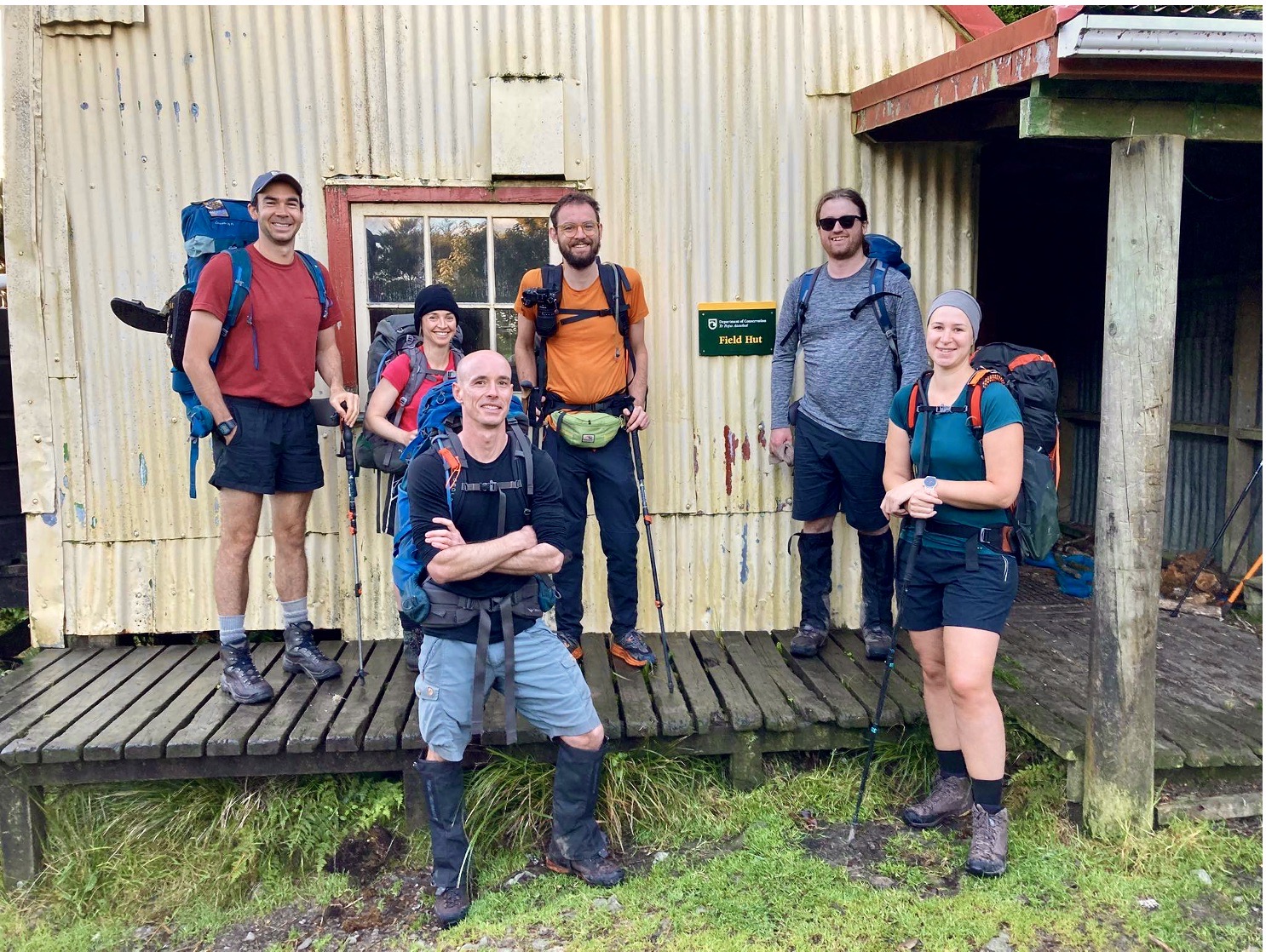
Excellent observations Tony, as you can imagine it was pretty unique to stumble upon Maungahuka hut and its tarn in such dry conditions.
The second photo of the story (Maungahuka Hut) is a great image that clearly shows just how dry the Tararua has been this summer – the tarn is merely the shrunken shadow of its former self. It also shows the dynamic nature of the Tararua landscape. Apparently a large boulder has rolled down from Maungahuka, demolishing the toilet on its way, and stopping directly outside the front porch – thankfully without damaging the shiny new tap on the water tank.